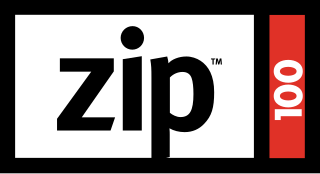
The Zip drive is a removable floppy disk storage system that was introduced by Iomega in late 1994. Considered medium-to-high-capacity at the time of its release, Zip disks were originally launched with capacities of 100 MB, then 250 MB, and finally 750 MB.
Akai is a Hong Kong manufacturer of consumer electronics. It was founded as Akai Electric Company Ltd in Tokyo, Japan, in 1946. Grande Holdings in Hong Kong purchased the Akai brand, and now distributes various electronic products such as LED TV, washing machines, clothes dryers, air conditioners and smart phones, through collaborations with other electronics companies bearing relevant expertise. inMusic Brands in the United States took over Akai's brand, starting the ‘Akai Professional’ label, that distributes high-end audio electronics products.
A music workstation is an electronic musical instrument providing the facilities of:

A sampler is an electronic musical instrument that records and plays back samples. Samples may comprise elements such as rhythm, melody, speech, sound effects or longer portions of music.
The Ensoniq Mirage is one of the earliest affordable sampler-synths, introduced in 1984 as Ensoniq's first product. Introduced at a list price of $1,695 with features previously only found on more expensive samplers like the Fairlight CMI, the Mirage sold nearly 8,000 units in its first year - more than the combined unit sales of all other samplers at that time.
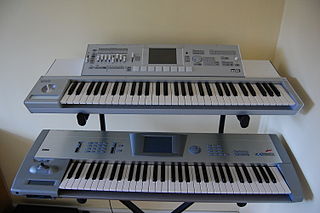
The Korg Triton is a music workstation synthesizer, featuring digital sampling and sequencing, released in 1999. It uses Korg's HI Synthesis tone generator and was eventually available in several model variants with numerous upgrade options. The Triton became renowned as a benchmark of keyboard technology, and has been widely featured in music videos and live concerts. At the NAMM 2007, Korg announced the Korg M3 as its successor.
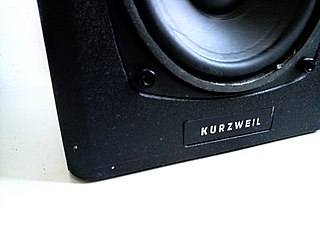
Kurzweil Music Systems is an American company that produces electronic musical instruments. It was founded in 1982 by Stevie Wonder (musician), Ray Kurzweil (innovator) and Bruce Cichowlas.

The Emulator is a series of digital sampling synthesizers using floppy disk storage, manufactured by E-mu Systems from 1981 until 2002. Though not the first commercial sampler, the Emulator was among the first to find wide use among ordinary musicians, due to its relatively low price and fairly contained size, which allowed for its use in live performances. It was also innovative in its integration of computer technology. The samplers were discontinued in 2002.
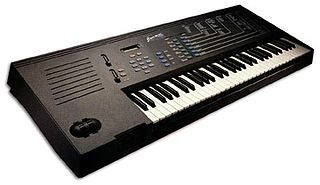
The Emax was a line of samplers, developed, manufactured, and sold by E-mu Systems from 1986 to 1995. Sold alongside their more expensive Emulator II and III samplers, the Emax line was conceived after the release of the Akai S-612 and Sequential Prophet 2000, and was designed to compete for the lower end of the sampling market.
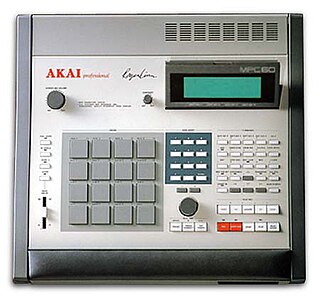
The Akai MPC is a series of music workstations produced by Akai from 1988 onwards. MPCs combine sampling and sequencing functions, allowing users to record portions of sound, modify them and play them back as sequences.

The Korg Trinity is a synthesizer music workstation released by Korg in 1995. It was also the first workstation to offer modular expansion for not only sounds, but also studio-grade feature such as ADAT, various sound engine processors, audio recording capability, and more. It was considered one of the most comprehensive music workstations, in term of features, at the time.
The Ensoniq TS-10 was a synthesizer and music workstation introduced by Ensoniq in 1993. It provided synthesis, user sample playback, sequencer, effect units and performance facilities in a 61-key package.
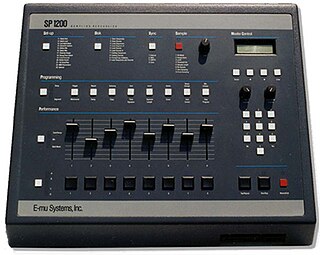
The E-mu SP-1200 is a sampler created by Dave Rossum that was released in August 1987 by E-mu Systems.
The Korg DSS-1 is a 12-bit polyphonic sampling synthesizer released in September 1986. It came out at a time when many of the popular synthesizer companies were beginning to get into sampling, an area of sound design that had previously been left to a handful of fledgling companies such as Fairlight, E-mu, and Ensoniq. Like Yamaha and Casio, however, Korg did not stay long in the sampling arena. The DSS-1 was the company's only sampler until 1998 when Korg introduced sampling options on their Triton and Trinity series of workstations, and on their Electribe series of drum-and-phrase samplers.
The Akai S1000 is a 16-bit, 44.1 kHz professional stereo digital sampler, released by Akai in 1988. The S1000 was among the first professional-quality 16-bit stereo samplers. Its abilities to splice, crossfade, trim, and loop sound in 16-bit CD quality made it popular among producers in the late 80s through to the mid 90s. The S1000 used 24-bit internal processing, had digital filters and an effects send and return, and came with 2MB of RAM.
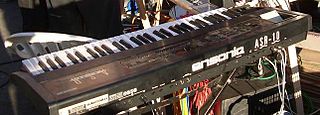
The Ensoniq ASR-10 was a sampling keyboard produced by Ensoniq between 1992 and 1998. The ASR-10 was a follow up product to the very popular Ensoniq EPS and Ensoniq EPS-16+ performance samplers, and was also available with a piano style weighted keyboard (ASR-88) and a rackmount version (ASR-10R). At the time, the machine was one of the most powerful samplers available.

The Amiga 1200, or A1200, is a personal computer in the Amiga computer family released by Commodore International, aimed at the home computer market. It was launched on October 21, 1992, at a base price of £399 in the United Kingdom and $599 in the United States.
The Roland W-30 is a sampling workstation keyboard, released in 1989. It features an on-board 12-bit sampler, sample-based synthesizer, 16-track sequencer and 61-note keyboard.

The Linn 9000 is an electronic musical instrument manufactured by Linn Electronics as the successor to the LinnDrum. It was introduced in 1984 at a list price of $5,000, and about 1100 units were produced.
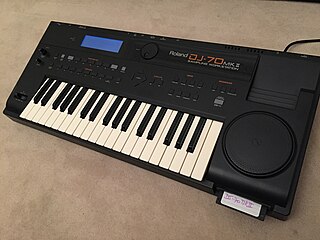
The Roland DJ-70 is a 16-bit linear A/D Conversion & 20-bit linear D/A Conversion sampling workstation and was released in 1992 by Roland Italy.













